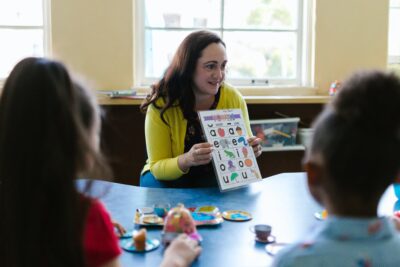
Editor’s Note: The second brief of an eight-part series from the North Carolina Early Childhood Foundation is embedded below on classroom experiences while aligning reading instruction with the “science of reading.”
As discussed in brief number 1, North Carolina’s Excellent Public Schools Act requires that all pre-K to fifth-grade teachers in traditional public schools complete Language Essentials for Teachers of Reading and Spelling (LETRS) training and outlines plans for how the state can build the capacity of classroom teachers to align their instruction with the science of reading (SoR).
Much less attention has been given to whether and how to build the capacity of paraprofessionals in the classrooms, such as the teacher’s aide. This is important because during many parts of the school day, teachers rely on paraprofessionals so that individual or small groups of students can receive targeted instructional support.
Building the reading instruction capacities of all staff working in elementary classrooms is vital to achieving the ‘all hands on deck’ approach that is necessary to ensure that students have the best opportunity to become proficient readers. Although the paraprofessional’s role is not planning curricula or primary instruction, they need a strong understanding of the SoR and aligned instructional practices to effectively implement designated teaching and other support tasks that increase opportunities to learn for individuals or groups of students who need more support.
The entire brief is embedded below.
Recommended reading



